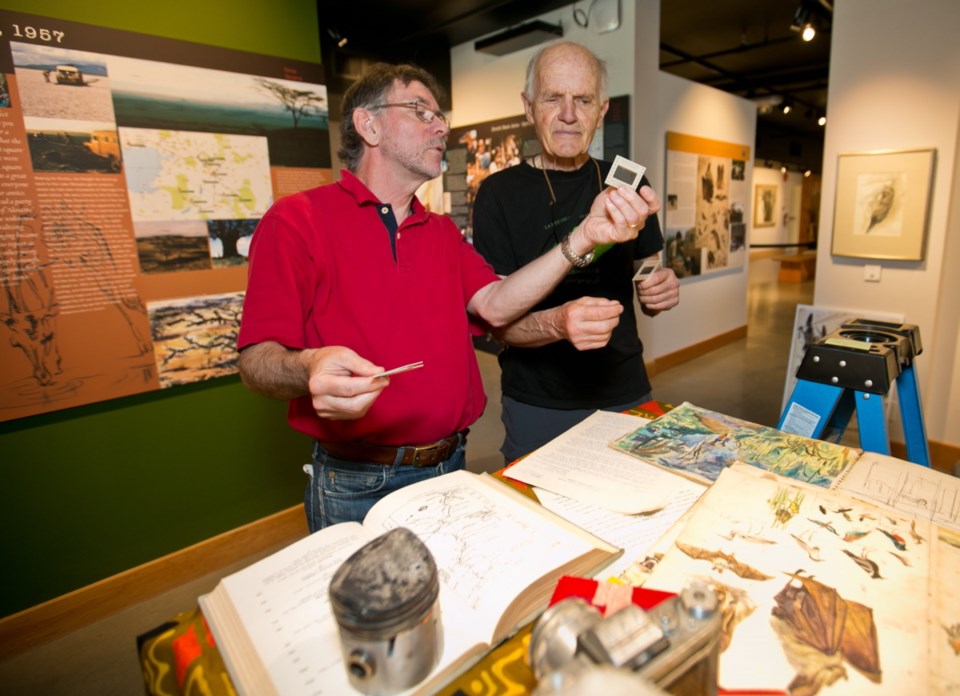African wildlife was magical for two 20-something Canadians travelling the world, but human nature in India and Nepal stunned them both.
Renowned wildlife biologist Bristol Foster, now 82, recalls how he and his best friend, wildlife artist Robert Bateman, 84, were awestruck at encountering creatures such as rhinoceros, lions and elephants in the wild.
But when they travelled to India and Nepal and wandered into temples covered in Kama Sutra carvings, they were astonished.
“They had these huge friezes of groups of people, two, three or four at a time,” Foster said in an interview on Friday.
“And they were all copulating.”
It was all part of a 14-month trip, from 1957 through 1958, when Foster and Bateman roamed the world in their specially built Land Rover. That trip forms the basis of a new exhibit opening today at the Robert Bateman Centre, 470 Belleville St., called Rover Boys.
The title of the exhibit is drawn from the third travelling companion, their Land Rover. It was built to order in England, with an ambulance-style body, and named “Grizzly Torque” by the pair.
That vehicle was sold on return to Canada. The Land Rover has been found and is being restored. It is expected to arrive in Victoria in the coming weeks.
Grizzly Torque is still fondly recalled by both men, since it took them on their formative trip across Africa, and through Southeast Asia and Australia.
Bateman, who now lives on Salt Spring Island, would go on to become one of the world’s foremost wildlife artists. Foster would become head of the B.C. Provincial Museum — now the Royal B.C. Museum — and be in charge of establishing the province’s ecological reserves.
The Rover Boys exhibit will also give students and lovers of Bateman’s art a chance to see sketches and watercolours from the notebooks he compiled on the trip. They present an early glimpse of a talent that now thrills the world.
The exhibit is also a look back to a simpler, perhaps happier, time.
Men in their 20s are no longer so easily shocked by depictions of sex as Foster and Bateman were when they encountered the Kama Sutra carvings in India and Nepal in the late 1950s.
But especially sad for the two men is that the African wildlife that was so magical is becoming scarcer. Even many of the people they met along the way, including the Mbuti Pygmies of Congo, have been killed or absorbed by modern Africa.
Africa and Southeast Asia are significantly more dangerous now. Even Foster doubts whether two men in their 20s could now drive across these continents in a Land Rover with nothing in mind but a desire to see as much of the world’s wildlife as they could encounter.
“The world was so different back then,” Foster said. “It was a lot more peaceful.”



